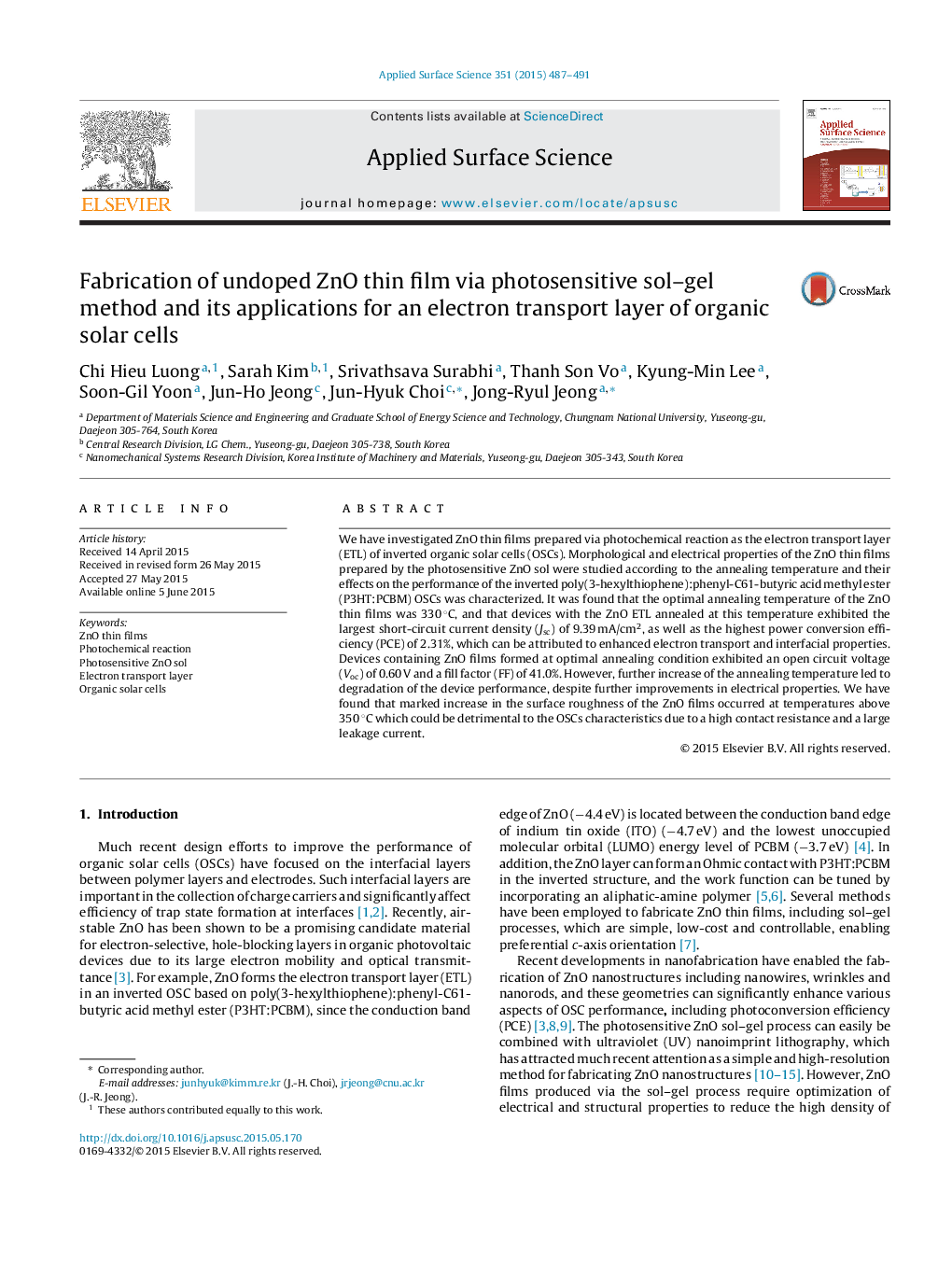| Article ID | Journal | Published Year | Pages | File Type |
|---|---|---|---|---|
| 5357983 | Applied Surface Science | 2015 | 5 Pages |
Abstract
We have investigated ZnO thin films prepared via photochemical reaction as the electron transport layer (ETL) of inverted organic solar cells (OSCs). Morphological and electrical properties of the ZnO thin films prepared by the photosensitive ZnO sol were studied according to the annealing temperature and their effects on the performance of the inverted poly(3-hexylthiophene):phenyl-C61-butyric acid methyl ester (P3HT:PCBM) OSCs was characterized. It was found that the optimal annealing temperature of the ZnO thin films was 330 °C, and that devices with the ZnO ETL annealed at this temperature exhibited the largest short-circuit current density (Jsc) of 9.39 mA/cm2, as well as the highest power conversion efficiency (PCE) of 2.31%, which can be attributed to enhanced electron transport and interfacial properties. Devices containing ZnO films formed at optimal annealing condition exhibited an open circuit voltage (Voc) of 0.60 V and a fill factor (FF) of 41.0%. However, further increase of the annealing temperature led to degradation of the device performance, despite further improvements in electrical properties. We have found that marked increase in the surface roughness of the ZnO films occurred at temperatures above 350 °C which could be detrimental to the OSCs characteristics due to a high contact resistance and a large leakage current.
Related Topics
Physical Sciences and Engineering
Chemistry
Physical and Theoretical Chemistry
Authors
Chi Hieu Luong, Sarah Kim, Srivathsava Surabhi, Thanh Son Vo, Kyung-Min Lee, Soon-Gil Yoon, Jun-Ho Jeong, Jun-Hyuk Choi, Jong-Ryul Jeong,
